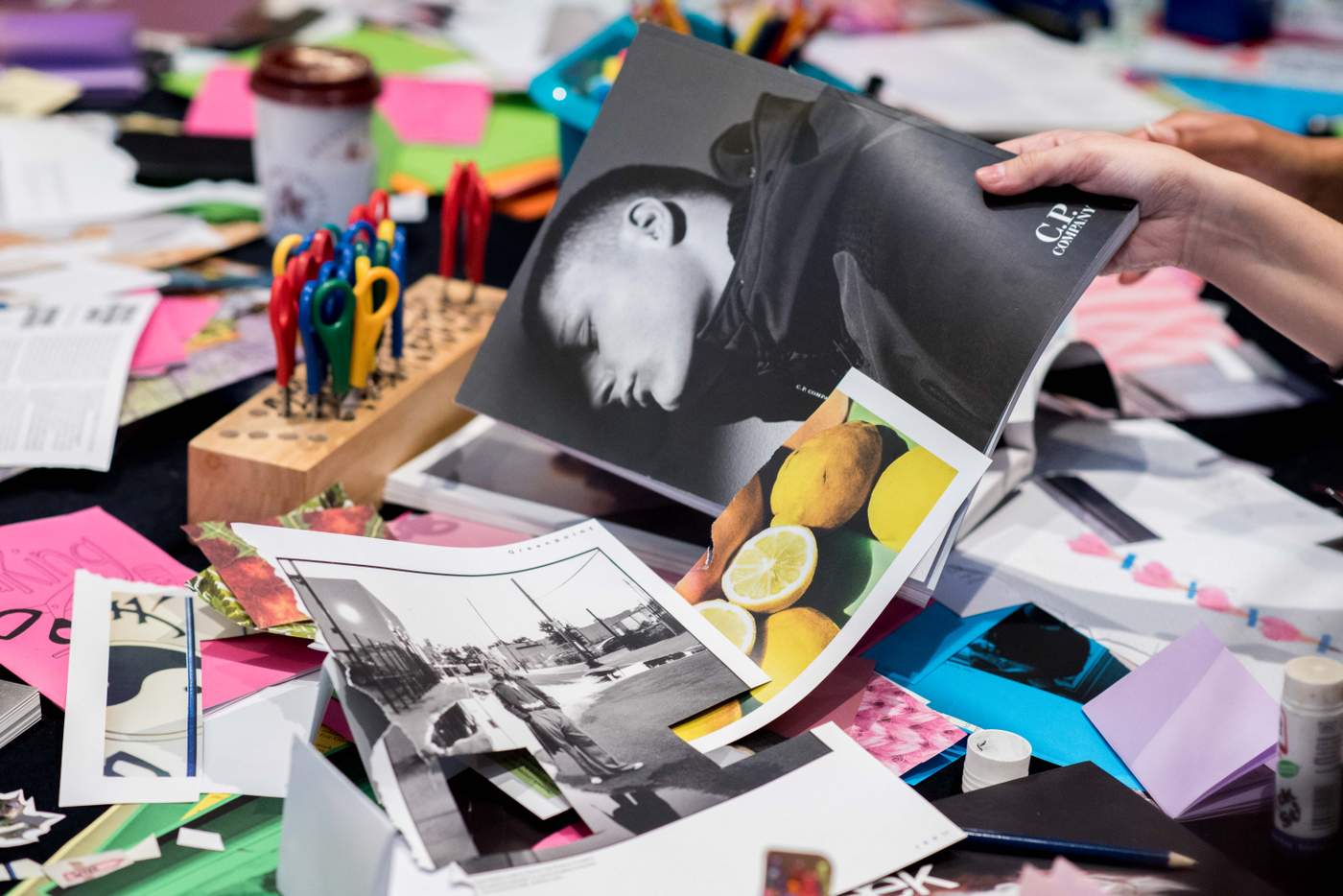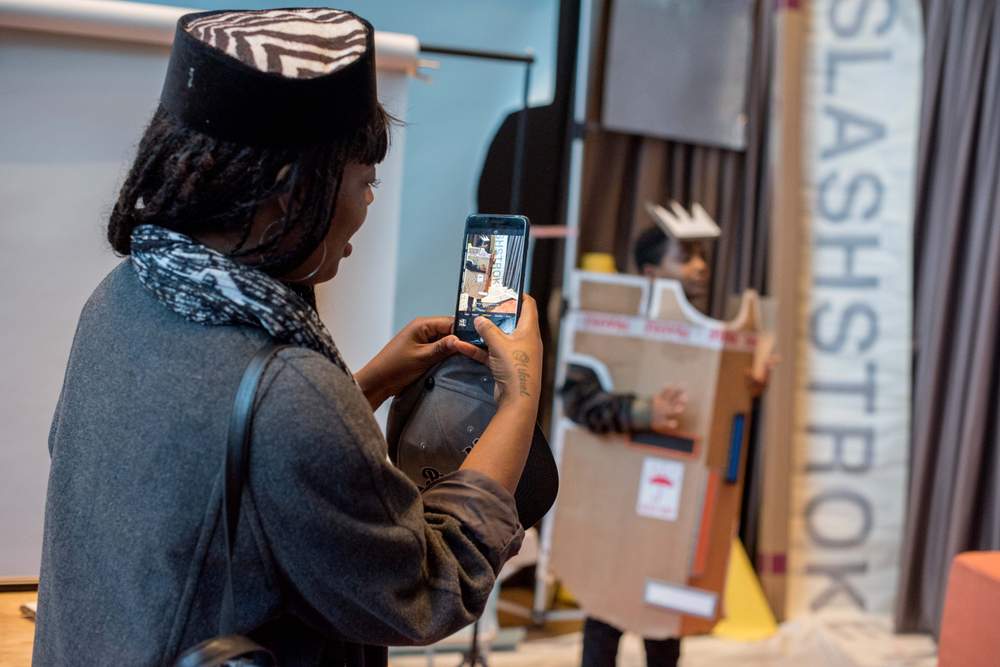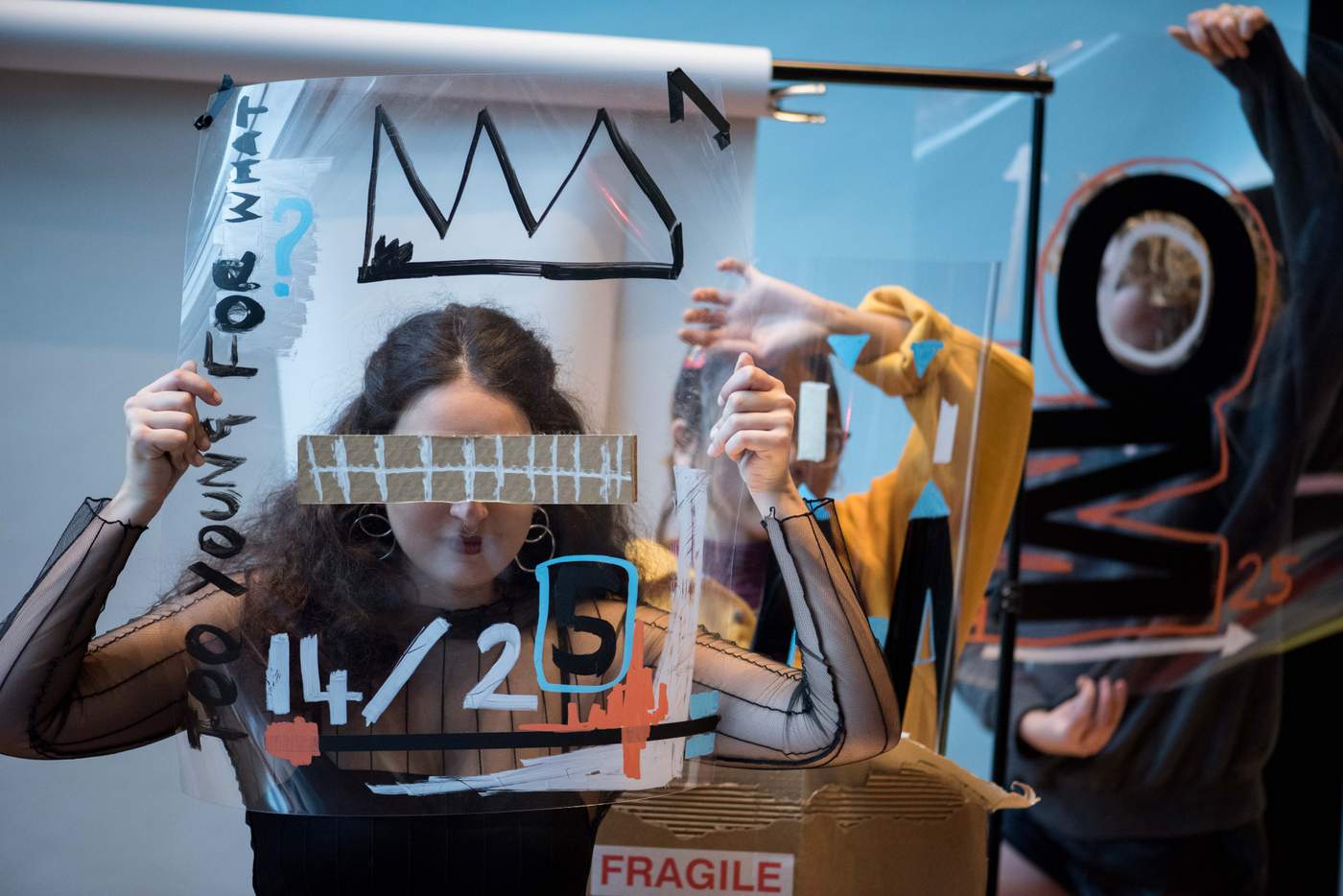'Don't you think you're a bit young?'
'Too young for what?'
Complementing our Basquiat: Boom For Real exhibition in the Art Gallery, Too Young for What? offered opportunities to develop young people’s creativity, showcasing a range of new work with and by young people from across east London and beyond.
But what does Basquiat and his practice mean to young and emerging artists? We explored Basquiat's artistic legacy through a range of art forms including music, performance, street art and poetry.
Barbican Guildhall Creative Learning curator Chris Webb shares his highlights from Too Young For What?
'As a curator at Barbican Guildhall Creative Learning my role is to create opportunities for people to explore their creative voice and experience world-class arts in a very personal way.
While the exhibition Basquiat: Boom For Real provides visitors with a once-in-a-lifetime opportunity to see many works of Jean-Michel Basquiat displayed together in London, I didn’t want to simply replicate it’s very thorough and thoughtful content for our centre-wide event Too Young For What?
Instead, I wanted to invite young people to trace the legacy of Jean-Michel Basquiat from 1980s Downtown New York to the creative scene here and now in 2017, by giving our visitors creative spaces and activities to examine and celebrate the relevance of Basquiat’s practice today.
Basquiat’s works often read like a hidden puzzle: cut, copied, coded and pasted with references to his idols, experiences and the information that surrounded him. We approached programming Too Young For What? as a metaphorical collage across our foyers. Mixing art forms, practices and themes, we wanted to give people a chance to cut/copy/paste Basquiat with room to bring in their own influences and ideas across all art forms.
At the centre of the day was the 'SAMO©, but different' stage. Co-curated with Poet in the City this stage featured a mix of artists, poets, musicians, performers and activists all of whom create work inspired by Basquiat or his way of working. Peppered throughout these performances were new pieces of commissioned work, including pieces from Paula Varjack and Jacob Sam-La Rose who were invited to respond to Basquiat’s life and work. Other performances in a series of themed sessions hosted by our Barbican Young Poets, included critically acclaimed writer and performer Gemma Weekes, literacy activist and poet Dorothea Smartt, poet Joshua Idehen and street artist Karim Samuels.
Finally the question ‘what would Basquiat be doing in a digital world?’ led us to work with glitch artist and curator of ‘No Copyright Intended’, Antonio Roberts, who collaborated with illustrator Maria Middtun to create an ever-changing collage wall that mixed digital and paper contributions.
Too Young For What? was a smorgasbord of creative activity that invited our visitors to examine the past, present and future of Basquiat’s legacy.
The day concluded with a sharing of poet Keisha Thompson’s poetic chronicle of the day, a new work created in response to her observations. Her poem Curiosity Leads perfectly captures the spirit of the day and underlines just how relevant Basquiat’s legacy is now.
Too Young For What? took place on Saturday 7 October 2017
Watch our Young Reviewers' review from Too Young For What?
With curation from Poet in the City
Supported by Polaroid Originals
And with thanks to
Binary Graffiti Club, Slashstroke Magazine, Antonio Roberts, Belinda Zhawi, Bellatrix, Chiel Busscher, Chiizii, Dorothea Smartt, Eelyn Lee, Gemma Weekes, Holly Casio, Jacob Sam-La Rose, Jordan Mckenzie, Joshua Idehen, Karim Samuels, Keisha Thompson, Mar Dixon, Maria Middtun, Maripol, Megan Pickering, Paula Varjack, Rachel Long, Tim Lawrence
Aroob Sajjad, Beth Christlow, Clara Sinephro, Cosima CobleyCarr, Demy Joseph, Elaine Awolaja, Hector Dyer, Jodian Bruce, Katie Fiore, Maria Goundry, Max Baraitser Smith, Pheobe Nightingale, Raheela Suleman, Sam Baraitser Smith, SarahAluko, Zahrah Sheikh
Barbican Young Poets: Amina Jama, Kareem Parkins Brown, Kieron Rennie, Victoria Adukwei Bulley
Barbican Young Programmers: Nimmo Ismali, Joel Babbington, Lily van den Broecke, Will Webb
Camilla Greenwell and the Barbican Young Photographers: AngusGrant, Catarina Rodrigues, Faye Song, Foyez Uddin
Barbican Young Reviewers: Alexandra Dewing, Leon Oteng, Lily James
Mountain Way Pictures
About Basquiat: Boom for Real
The first large-scale exhibition in the UK of the work of American artist Jean-Michel Basquiat (1960—1988)
Discover the work of Jean-Michel Basquiat, the pioneering prodigy of the 1980s downtown New York art scene. Engage in the explosive creativity of Basquiat who worked with Andy Warhol, Keith Haring and Blondie, among others. Featuring rare film, photography and archive material, the show captures the spirit of this self-taught artist, poet, DJ and musician whose influence, since his death at 27 in 1988, has been enormous.
Basquiat: Boom for Real is open until 28 January 2018
Book tickets
Join Young Barbican
Get discounted tickets to unmissable art and entertainment plus access to programmes, workshops and a growing network of young creatives by joining our free Young Barbican scheme for 14–25 year olds.



